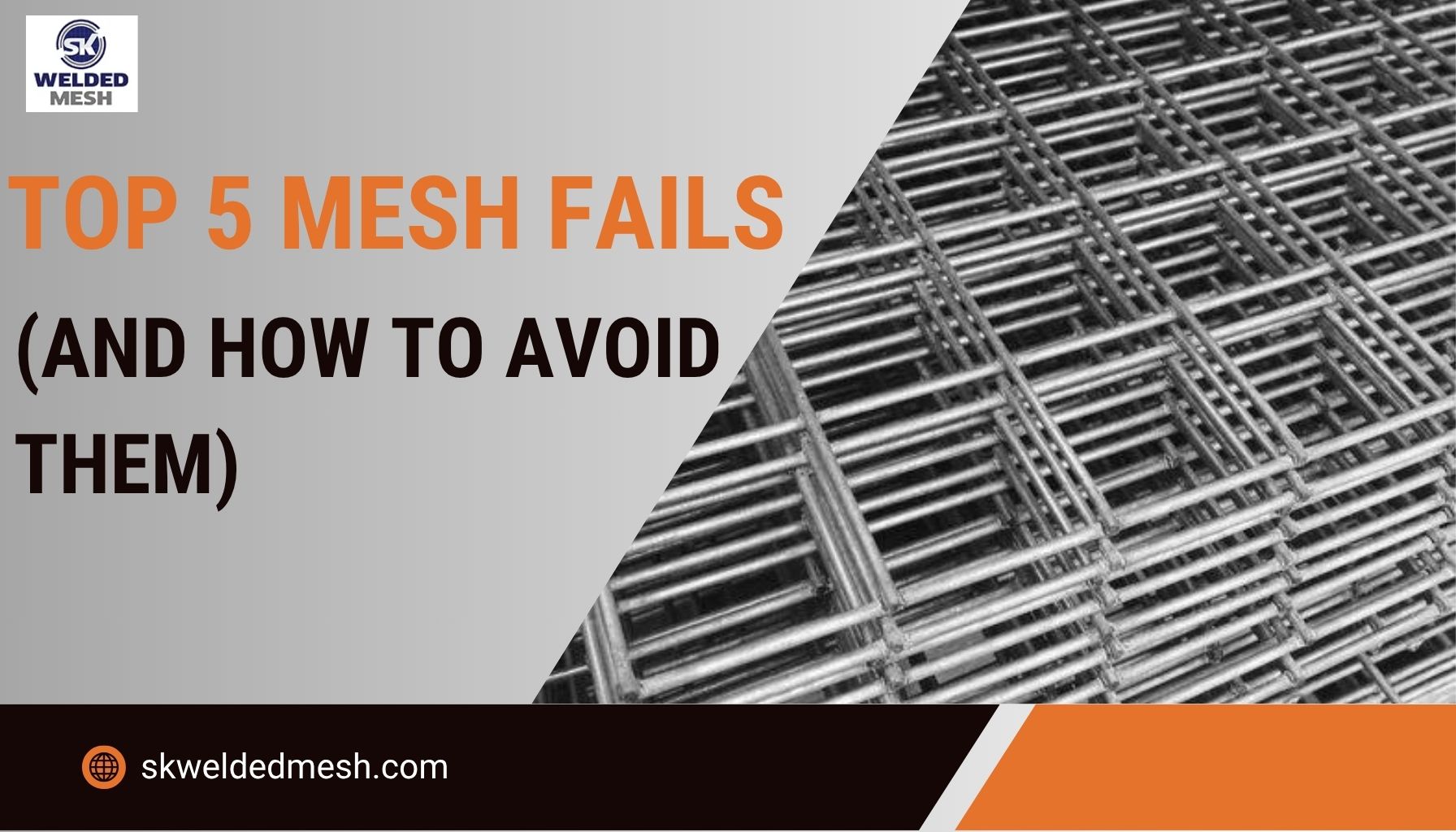

It always looks fine in the beginning. The panels go up. The fence holds. The slab sets.
But months later, rust creeps in, wires loosen, or panels bend under stress. And then the questions begin. Not just about the mesh, but about what could’ve prevented the damage in the first place.
Most of these failures trace back to simple oversights—ones that are avoidable if caught early.
Here’s what to look out for, and how we’ve seen it resolved on the ground:
All mesh looks similar on the surface. But what works for a boundary wall may fail inside a precast column or exposed coastal site.
The problem starts when standard mesh is used in high-load or weather-sensitive zones. It may hold at first, but the wear begins to show quickly.
We’ve seen this on sites where the soil had high salinity or where panels were placed near vibrating machinery.
Mesh with the right tensile strength and coating would’ve handled both. That’s why we work closely with project teams to match mesh specs to real-world site conditions.
Good mesh depends on how it’s fixed. Unsupported edges flex. Over time, they pull loose or warp. That gap widens with wind, foot traffic, or shifting concrete.
On one jobsite, this led to repeated cracks along the edge of a ramp slab, just because the reinforcement didn’t extend far enough.
Mesh should always be anchored firmly and overlap where needed. In our own deliveries, we include guidance for placement, spacing, and fixings when clients ask for support beyond the supply.
Uncoated mesh may look clean on day one. Give it a rainy season, and you’ll spot the orange rust lines creeping out from joints.
Rust weakens welds and reduces lifespan, especially in outdoor or water-prone zones.
Coated mesh lasts longer, especially when galvanized or PVC-dipped.
Our teams handle this in-house so each panel arrives with the right finish for the job environment. This step adds years of life, especially in fencing or structural work with long-term exposure.
Cutting mesh on site seems simple until you’re doing it repeatedly. Uneven cuts, misaligned overlaps, and last-minute adjustments often lead to inconsistent reinforcement.
In custom precast or shaped molds, this mismatch becomes more visible.
Custom-fabricated mesh saves that headache. We’ve helped clients eliminate scrap and install mesh straight into complex molds without trimming. It starts with drawings. It ends with ready-to-pour panels.
Mesh fails don’t always happen during installation.
Sometimes, the issue starts at the gate. Bundles arrive unmarked, sizes mixed, and panels misplaced. On larger sites, this slows everything down.
We’ve seen projects avoid this entirely through clean packing and job-wise labeling.
When mesh arrives tagged and ready, your crew spends less time sorting and more time building. This small step protects both the material and the schedule.
Every failed mesh story starts with a detail that seemed too small to matter. But these details shape the entire build.
We’ve worked alongside teams that discovered this mid-project and shifted to tighter specs, better coatings, and mesh that fits from the start. Our focus has always been on helping you avoid these slow leaks in performance—through better prep, cleaner deliveries, and products that don’t need a second fix.
If that’s where your project is headed, we’re ready to step in. Get in touch with us today.